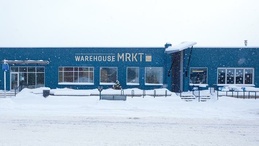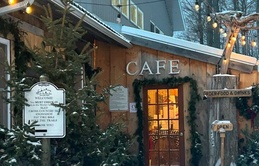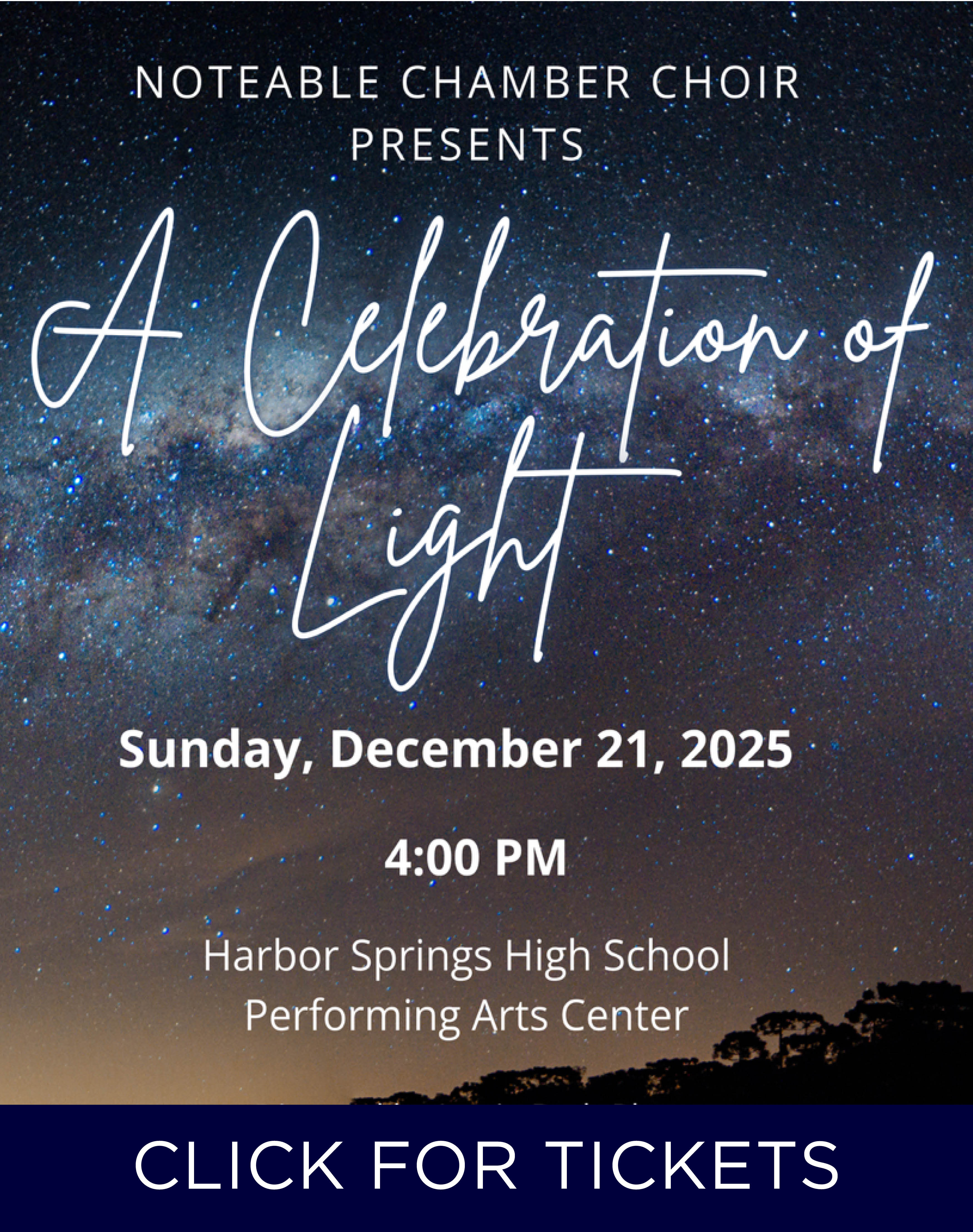To wine or not to wine
May 24, 2009
To Wine or not to WineBy Kristi Kates 5/25/09
“Wine makes a man more pleased with himself; I do not say it makes him more pleasing to others.” - Samuel Johnson
It might seem quite romantic and summer-like to take a bottle of something luxurious - and usually alcoholic - with you on your picnic, lawn-concert evening, or other Northern Michigan outdoor jaunt. But what if you can’t drink alcohol for health reasons, you’re fighting the good fight against alcoholism, or you simply aren’t interested in drinking alcohol? That doesn’t mean you have to be deprived of the flavor, the ritual, the refreshment, or the sparkle of grape in your glass - you’ve simply got to do a little legwork.
LOCAL OPTIONS
The trick in Northern Michigan, at least, might be in the search itself. In our ongoing interest in keeping things local, we placed calls to half a dozen popular local wineries - Left Foot Charley, Peninsula Cellars, Chateau Grand Traverse Winery, Bowers Harbor Vineyards, Mission Orchards and Vineyards, and Chateau Chantal. Of those, Chateau Chantal was the only one that even offered any sort of a non-alcoholic wine alternative, which is their three varieties of sparkling grape juices.
“We offer white grape, raspberry-grape, and cherry-grape, with no sugar added,” explains Bill Autenreith, Chateau Chantal’s tasting room manager.
Part of the problem in locating high-quality wine alternatives lies -- for starters -- in the stereotype. Perpetuated in large part by popular culture in the movies and on TV, romance, glamour, and good times in general are supposedly far more often accompanied by a bottle of Pinot Noir than a bottle of Welch’s Concord Grape.
The other part of the problem is that many wineries don’t want to put effort into products that aren’t alcoholic (and thereby sellable with more cachet at a loftier price). Some scoff at the notion of non-alcoholic wine, thinking of it as “Kool-Aid,” as opposed to a viable, delicious beverage that can stand on its own.
THE PROCESS
Making a dealcoholized wine isn’t that difficult, although perfecting the flavor, body, and richness of it may be a bit more of a challenge.
Generally, non-alcoholic wine is made by extracting the alcohol through a filtering process that leaves the other components of the wine intact. This is usually done by either vacuum distillation, which utilizes a vacuum-focused atmospheric pressure change to boil the liquids at a lower temperature and distill off the alcohol; or reverse osmosis, which is the same method often used to purify drinking water.
As far as removing the alcohol itself, it’s true that non-alcoholic wines still contain some alcohol - beverages termed “non-alcoholic” can contain up to half a percent of alcohol by volume, according to federal law - but keep in mind that less than half a percent of alcohol is actually about the same as what you’ll get in... a glass of orange juice. So it’s something of a non-entity.
In order to match the body of alcoholic wine, non-alcoholic wines are also often allowed a residual two percent or so sugar content to give that slightly weighty, heavier element to the wine. Most of the best non-alcoholic wines are aged in small oak barrels and filtered according to the same traditional methods used for alcoholic wine, simply adding the distillation or osmosis step.
FLAVOR COMPONENTS
But what about the flavor? Well, keep in mind that non-alcoholic wine isn’t just grape juice in a pretty bottle. It’s real wine that’s been fermented per usual - then had its alcohol removed. So the general consensus is that the taste of well-crafted non-alcoholic wine can be pretty much the same as other wines - but without the alcohol aftertaste, or, obviously, the alcohol side effects.
Most of the flavor of alcoholic wine - and beer, for that matter - is from the grapes or the grain and the yeast, plus other flavors that arrive courtesy of the fermentation and aging process. The three things that most affect the flavor of wine are the winemaking process, the climate where the grapes are grown, and the grapes themselves.
One company revered for its non-alcoholic wines is Ariel, which utilizes the same premium grapes as those used in “regular” wine - cabernet grapes from the Napa Valley as well as other grape varietals from Monterey and Sonoma - and they make their sparkling non-alcoholic wines from the same grapes used for alcoholic champagnes, chardonnay and pinot blanc grapes. Ariel also carries the distinction of having produced the only dealcoholized wine to win a gold medal at a formal competition against regular wines.
Non-alcoholic wines, with their fruitiness, are even said to often replicate the ideal taste of white Zinfandels and sparkling wines better than their alcoholic counterparts. And many popular wine-based cocktails can be made just as well with non-alcoholic wines - for instance, champagne cocktails, mimosas, wine spritzers, kir royales, and even picnic-perfect punch bowls of sangria.
Non-alcoholic wines can be paired with foods just as well as alcoholic wines, too.
And there’s yet another bonus to choosing non-alcoholic wines over their pricey cousins; you can expect to pay around $6-15 per bottle for non-alcoholic wines, as opposed to a much higher price range for the traditional alcoholic versions.
HEALTH BENEFITS
Alcohol-free wine also has other advantages over its alcohol-laden counterparts. While it’s been proven that there are health benefits from moderate wine consumption, the same antioxidants found in regular wine also exist in alcohol-free wine, provided the same quality of grapes were used; and alcohol-free wine carries about 15-25 calories for a four-oz. glass, compared to around 90-100 calories for the alcoholic version. Removing the alcohol component is also said to actually be a plus, as the alcohol itself not only increases your calorie intake, but also raises your blood pressure and possibly your risk for cancer.
So if all of this sounds like a good idea to you, and you’d like to find some non-alcoholic wine choices of your own, you’ll have to - at least for the time being - shop online.
One good online place to start is the aforementioned Ariel Vineyards (www.arielvineyards.com), which produces a dozen different non-alcoholic wines, including a Cabernet Sauvignon from Paso Robles and a Chardonnay from Monterey.
Another is Draper Valley Vineyard (www.drapervalleyvineyard.com), a vineyard that is “dedicated to the production” of non-alcoholic wines, which are listed as “made from the finest wine varietal grapes, selected and picked at the precise peak of their flavor.”
And the largest American brand of non-alcoholic wine is Fré, from Trinchero Valley Estates (www.frewines.com). Crafted in their million-dollar “spinning cone” low-temperature still, the Fré line of wines includes a white Zinfandel, red and white table wines, a Merlot, a Chardonnay, and both Brut and Spumante sparkling wines.
Or - perhaps even better - you could politely encourage your favorite local Northern Michigan vineyard to add a few non-alcoholic varieties to their list of wine selections.
Trending

Farm to Glass with Ethanology
When Elk Rapids distillery Ethanology committed to locally-sourced ingredients for their products, it seemed like they&rsquo… Read More >>
MRKT HLDY SHPPNG, aka Warehouse MRKT Holiday Shopping!
Shop the latest from local makers and vendors at the Holiday MRKT Share at Warehouse MRKT in TC, Saturday, Dec. 20, from 10a… Read More >>
Men and Ugly Sweaters
Those two things don’t always go together, but on Dec. 19, you’ll see both out and about in Petoskey and Harbor … Read More >>


